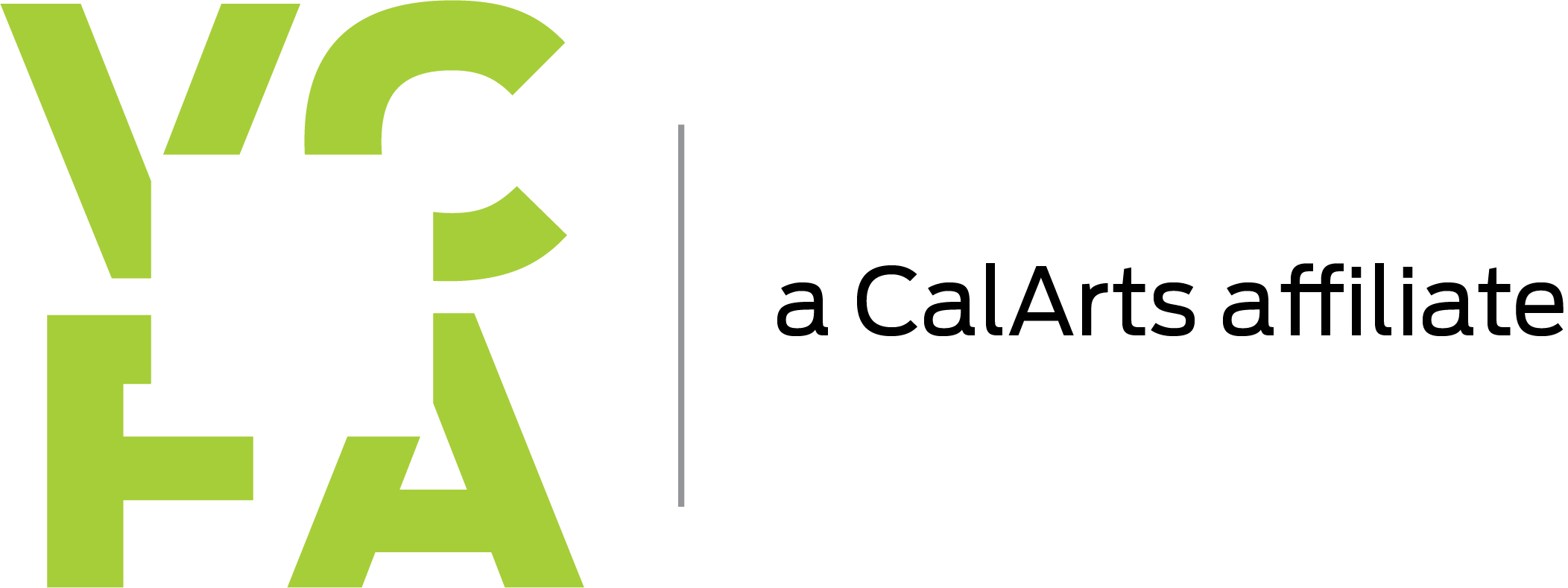Explore the Graphic Design residency
A closer look at MFA in Graphic Design residency and semester work
The low-residency model is ideal for the working graduate student who wants to complete a terminal degree in Graphic Design without relocating or disrupting their professional and personal lives.
Instead, students attend a 9-day in-person residency period every semester and then continue their studies remotely in the home community during the remaining six months of the semester.
VCFA’s academic calendar is divided into two six-month semesters per year: a summer and winter semester.
Each semester begins with a 9-day residency packed with lectures, critiques, workshops, exhibitions, and discussions. Students leave the very first residency with new ideas and a vibrant network of fellow designers, mentors, and collaborators.
During residencies, students get to know faculty and participate in the faculty advisor selection process. Once they have been matched with an advisor, students develop unique semester study plans that will broaden and deepen their design practice, pushing them to think critically about the social, ethical, historical, formal, and philosophical implications of graphic design.
In addition to their design community, students are on campus with our five other MFA programs during residency: Film, Music Composition, Writing, Writing for Children & Young Adults, and Visual Art. Designers will have the opportunity during residency for interdisciplinary study, work, and networking.
The semester continues with 6 months of independent work in each student’s home community, where they remain in dialogue with their faculty advisor. At the end of the semester, students return to residency again to present their work in an exhibition and engage in critiques and academic exploration to prepare for their next semester. The cycle continues each semester with a week-long in-person residency followed by six months of independent study.
VCFA’s low-residency model is the perfect program to fit my busy schedule, aspirations, and goals. Its community-focused approach aligns seamlessly with the way I run my organizations, company, and classrooms.
Semester Work
Mentorship & Individualized Study
The MFA in Graphic Design Program at VCFA is unique in its student-centered pedagogy, its low-residency structure, and its expansive approach to the discipline of Graphic Design. The faculty and staff comprise one of the strongest assets of the program.
- As individuals, they are accomplished designers, artists, thinkers, historians, critics, theorists, and teachers.
- They are also remarkable people who are generous and caring, and who are not afraid to ask tough questions of the students and of each other.
- The low-residency format allows for faculty and staff to join from across the country and around the world.
- As a group, the faculty and staff have extraordinary diversity regarding geography, expertise, experience, education, nationality, race and ethnicity, as well as wide-ranging design philosophies and teaching styles.
- The commonality is a commitment to design and education, to the student experience, and to the remarkable teaching and learning environment we have created as a group at VCFA.
After each residency, students return to their homes and stay hard at work, devoting at least 25 hours a week to their studies. They remain in close consultation with their faculty advisor through email, phone, or video conference. Through this structure, students can develop their professional practices within their communities and integrate new research methods into their work.
Students deepen their artistic vision, enhance their understanding of the evolving discipline of design, and hone their craft. This merging of creative practice with critical inquiry is a key component of the program.
Our 4:1 student-faculty ratio encourages close relationships between students and faculty advisors. Students and faculty learn and create together, sharing experiences, exchanging strategies, and challenging conventions. With guidance from faculty, visiting designers, and peers, students ask the hard questions: How can design change the world? How does the process of designing change you?
Frequently Asked Questions
Is this an online degree program?
No. Low-residency at VCFA means that students spend time on campus every semester for a residency week and then spend the rest of the time working with a faculty advisor to create work they envision. Faculty advisors in the Graphic Design program serve as both guides and mentors, offering students resources, texts, and theory to help deepen their design skills and interests. Students submit digital or printed “packets” each month to demonstrate their ongoing progress. There are no online classes or assignments in the traditional sense of an online education structure.
Learn more about our low-residency model.
Do I need to have an undergraduate degree in design if I have been workin in the field for a number of years?
No, many of our students do not have an undergraduate degree in design but have held positions as designers or design faculty for quite some time. The admissions committee strongly considers professional experience, and much of our student body is made up of seasoned designers and professors who are interested in earning an MFA to strengthen their existing practice and professional career.
To learn more about the process, contact Admissions at [email protected].
If I have an undergraduate degree, in visual art but don't have a lot of experience in graphic design, would I be a good candidate for the program?
Yes, you would be a great candidate for our three-year track! In the three-year program track, students spend the first year developing their design foundation skills, learning new software, and working with typography. It is a great way to use your existing creative skills and apply them towards a career as a designer.
To learn more about the process, contact Admissions at [email protected].
How is it determined whether students enroll in the two-year or three-year program?
Students who enroll in the two-year program have a solid foundation of design fundamentals. They are comfortable working with typography, are proficient with Adobe design software, and have an understanding of design history and theory. They have a strong portfolio of design work and are ready to take their practice to the next level. Three-year-track students need an extra year to learn or brush up on these skills. They have a strong portfolio of creative work that may include some design but may also include creative projects in other mediums.
To learn more about the process, contact Admissions at [email protected].
Ready to Apply?
Ready to get started or have questions?
Contact our admissions team today to get started.

